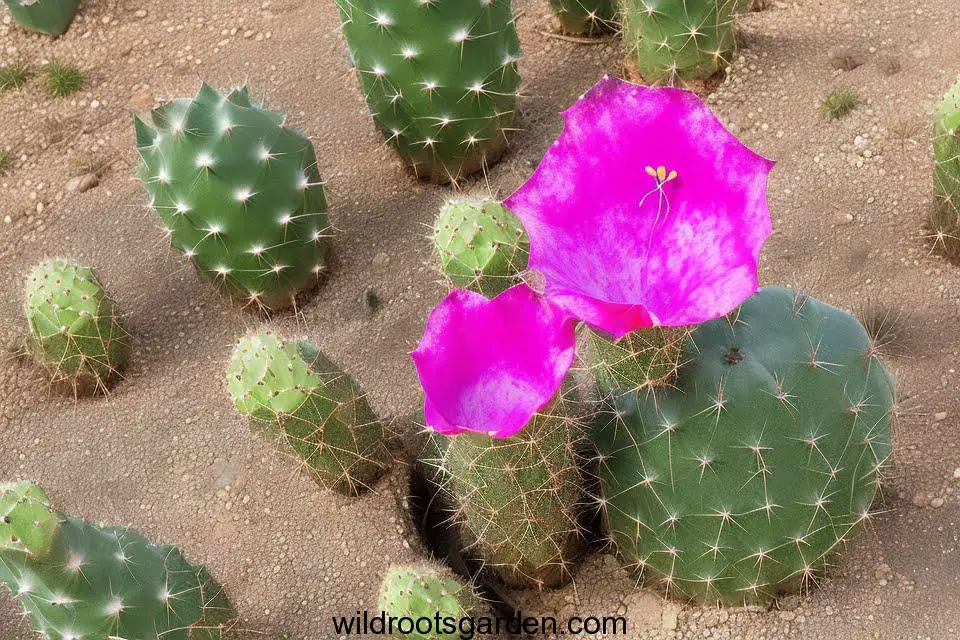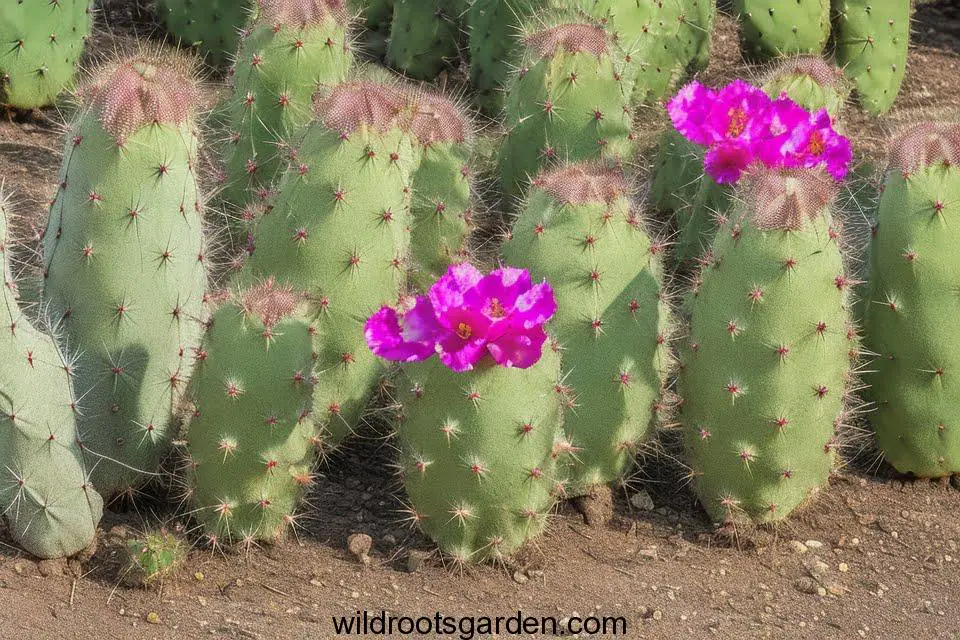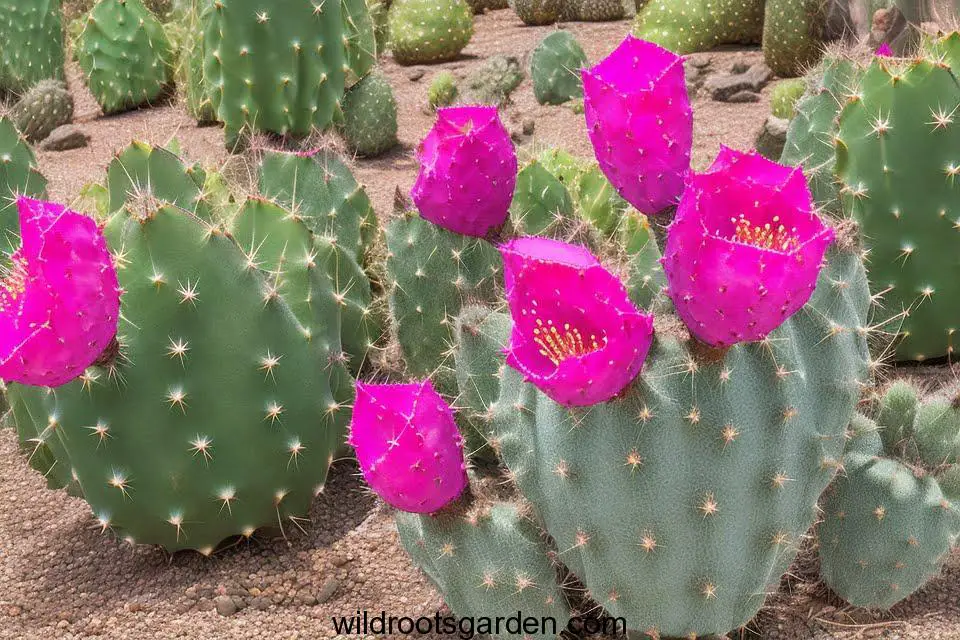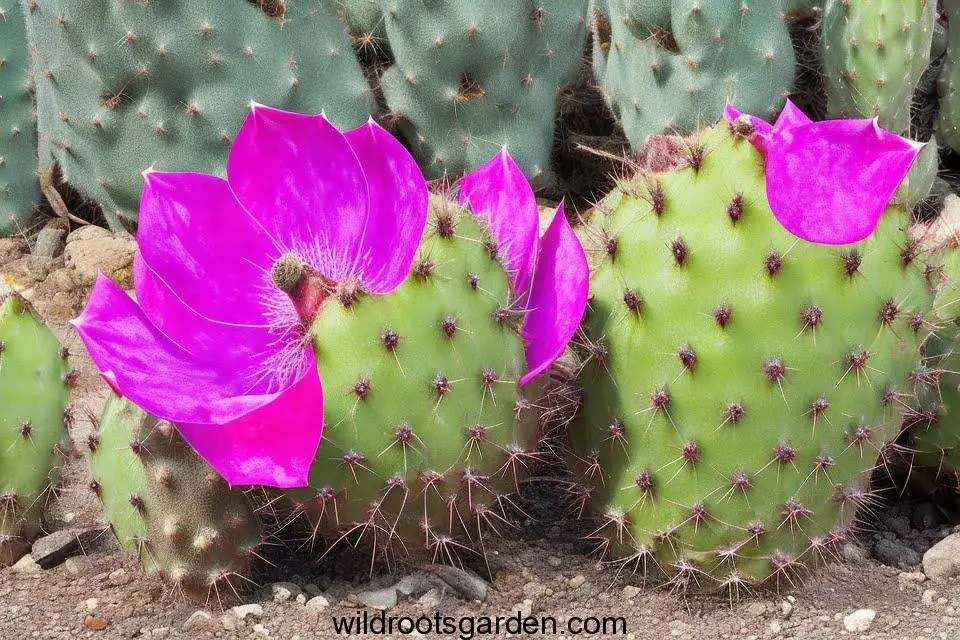Adaptations of the Prickly Pear Cactus. The prickly pear cactus, scientifically known as Opuntia, is a remarkable plant that has adapted to survive in various challenging environments around the world. With its distinctive paddle-shaped leaves, sharp spines, and vibrant flowers, this cactus has developed a range of adaptations that allow it to thrive in arid and desert regions. In this article, we will explore the fascinating adaptations of the prickly pear cactus and how they contribute to its resilience.

JUMP TO TOPIC
Introduction
The prickly pear cactus is native to the Americas, where it has evolved to withstand extreme temperatures, low rainfall, and poor soil conditions. Its ability to adapt to such harsh environments is a testament to its survival skills and ecological resilience.
Morphological Adaptations
Water Storage Capacity
Adaptations of the Prickly Pear Cactus. The ability of the prickly pear cactus to hold water is one of its most important adaptations. Because of its thick, fleshy stems, which act as reservoirs, the cactus can hold a lot of water when it rains. The plant can endure prolonged droughts thanks to its water storage capacity.
Spines for Protection
The spines on the prickly pear cactus are not simply for show; they are an essential defense mechanism against herbivores. The plant is shielded from potential injury by the strong spines that keep animals from grazing on it. Moreover, the cactus is shaded by the spines, which creates a microclimate and lowers water evaporation.
Paddle-Shaped Leaves
Adaptations of the Prickly Pear Cactus. The prickly pear cactus’ distinctive paddle-shaped leaves are essential to its ability to survive in arid climates. Since leaves have a high surface area, they can absorb more water when it rains briefly. The flattened design also lessens exposure to direct sunlight, which lowers the risk of dehydration.

Physiological Adaptations
Crassulacean Acid Metabolism (CAM)
Adaptations of the Prickly Pear Cactus. The prickly pear cactus makes use of the Crassulacean Acid Metabolism metabolic pathway (CAM). The prickly pear cactus maintains its stomata closed during the day to reduce water loss, in contrast to most plants, which open them to allow for gas exchange. Rather, it opens its stomata at night, allowing carbon dioxide to enter and be converted into organic acids that are then stored until the morning. The cactus can preserve water thanks to this unusual adaptation without sacrificing its capacity for photosynthetic growth.
Drought Tolerance
The prickly pear cactus has evolved a number of defenses to deal with protracted droughts. Due to its effective water-use practices, it can withstand severe water scarcity. The cactus can endure conditions where most plants would die by reducing water loss through its spines, strong stems, and small leaf surface area.
Reproductive Adaptations
Pollination by Insects
The pollination of the prickly pear cactus is dependent on insects like bees and beetles. These pollinators are attracted by the plant’s colorful, fleeting blossoms. The blooms reward the passing insects with honey, and the insects subsequently spread pollen from one flower to another, promoting fertilization and the growth of fruits.
Fruits and Seed Dispersal
Adaptations of the Prickly Pear Cactus. The edible fruits that the prickly pear cactus produces are an important source of food for a variety of species in its ecosystem. The fruits are loaded with nutrients and have lots of seeds. Creatures, such as birds and mammals, eat the fruits and then disperse the seeds in their waste, which helps the cactus spread and survive.

Ecological Importance
The prickly pear cactus’ adaptations have broad ecological repercussions. Several species of creatures, including insects, birds, and reptiles, can find homes on the cactus and food there. Its propensity to flourish in arid areas aids in preventing soil erosion and offers smaller plants shade and cover, fostering biodiversity in otherwise difficult situations.
Cultural Significance
Adaptations of the Prickly Pear Cactus. Several cultures throughout the world place cultural value on the prickly pear cactus. Indigenous tribes have used it as a food source and for medicinal purposes for ages. In societies that have mastered adversity adaptation, the cactus has come to represent tenacity and endurance.
Conservation Efforts
The prickly pear cactus confronts risks like habitat loss and climate change, just like many other plant species. There are initiatives in place to preserve and safeguard this famous plant. Conservation groups are striving to increase public awareness of the value of protecting the cactus’ natural habitats and putting policies in place to lessen the effects of climate change.
Conclusion
With its amazing adaptations, the prickly pear cactus is a symbol of the creativity and resiliency of nature. Its capacity to endure and flourish in harsh conditions is evidence of the effectiveness of adaptation. We may learn a lot about how living things deal with challenges and continue to cohabit with their environment by knowing and appreciating these adaptations.
FAQs
1. Are all prickly pear cacti edible?
No, not all prickly pear cacti are edible. While many species produce edible fruits, some may have toxic components or unpalatable tastes.
2. Can I grow a prickly pear cactus in my garden?
Yes, growing a prickly pear cactus in your garden is possible, provided you provide it with the right conditions. Ensure it receives plenty of sunlight and well-drained soil.
3. Are there any medicinal uses of the prickly pear cactus?
Yes, the prickly pear cactus has been traditionally used for various medicinal purposes. It is believed to have anti-inflammatory properties and can aid in treating certain health conditions.
4. Do all prickly pear cacti have spines?
While spines are a common feature of prickly pear cacti, some species may have reduced or absent spines. This variation can be attributed to genetic factors and environmental conditions.
5. How long does it take for a prickly pear cactus to produce fruits?
The time it takes for a prickly pear cactus to produce fruits can vary depending on various factors such as species, growing conditions, and environmental factors. Generally, it can take a few years for a cactus to reach maturity and produce fruits.

